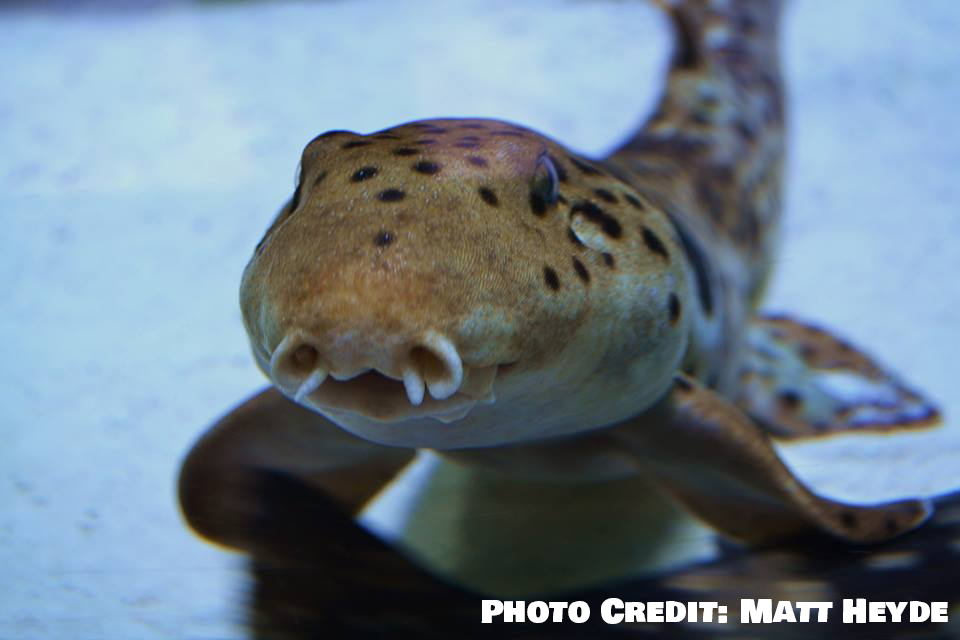If you notice that your aquarium shark has developed a bump on their chin, your shark unfortunately has a goiter and needs to be treated for it ASAP. If this bump gets too big, it will prevent the shark from being able to eat and it will unfortunately pass away from starvation. The goiter develops pretty slowly, so It’s a good idea to do a health check on your shark at least once per week. I do a check when I feed mine. It’s a lot easier when they are target trained so that you can have them come up to the surface for a piece of their food for an easy inspection. This way you can get a look at their chin in order to monitor for a goiter. If you notice that your shark currently has a goiter of any size on it’s chin, this article will teach you how to identify it, troubleshoot it and treat it.
So what is a goiter anyway? It’s a thyroid gland that becomes enlarged due to an iodine deficiency. This can be caused by a dietary deficiency or by exposure to excess nitrates. The goiter will appear as if your shark is growing a “chin” so to speak and will then get larger over time. It is imperative that once you start to notice the bump that you take action right away. Here is how to troubleshoot and figure out what it causing it:
How to Troubleshoot the Cause of a Goiter in an Aquarium Shark
First and foremost, you will want to perform a water quality test with an aquarium test kit that contains an ammonia, nitrite, nitrate and pH test kit. This will tell you how well your biological filtration system is working on your shark’s aquarium, pond or lagoon – whichever habitat you have them housed in. Next you will want to check your system’s salinity with a refractometer like this one:

If your water quality is bad, you will need to increase your biological filtration, do a water change (start with 25%) and you may need to add more water volume to your system. This will help to dilute and then eliminate the excess nitrates. It’s a good idea to test everything before performing a water change to ensure that the least amount of stress is endured by your shark.
Be sure not to change too many things at once as you can cause your system to go through a nitrogen cycle which will make your shark’s health situation a whole lot worse. In a shark system, your nitrates should be as close to 0 – if not at 0 – as possible. Long term exposure to high nitrates can cause all kinds of health issues in aquarium sharks. So make sure that your system has enough biological filtration and water volume to allow for the proper breakdown of your shark(s) waste. If your system tests come back clean, then it could be a dietary issue.
How to Reduce the Size of a Goiter in an Aquarium Shark
A good source of iodine can be found in shrimp, cod fish and tuna fish. I have found that with all of the aquarium sharks that I have cared for over the years – they all love shrimp! When I was treating my rescue epaulette shark Amelia for her goiter, I was soaking her food in an iodine supplement before giving it to her to eat.

I did that with several other rescue sharks and it seemed to help. They did eventually get sick of it – maybe it tasted funny – I’m not sure, but over time the iodine content in the shrimp in addition to the supplement (as long as they would tolerate it) worked well in reducing their goiter size fairly quickly. So essentially the cure to a goiter in an aquarium shark is to improve water quality as quickly and safely as possible and increase their iodine intake via adding more shrimp, cod fish and/or tuna to their feedings and trying a pure iodine supplement. This is the one that I use:

J. Crow’s® LLC – Lugol’s Solution of Iodine
As you treat your shark continue to monitor the size of their goiter and how much food they are consuming.
Some Additional Notes
Water quality is a tough aspect of shark keeping once the sharks are full grown. This is why it is best to have a large enough system at all times regardless of the size of your shark at the moment. You want your shark to live a long, healthy life and thrive under your care. That’s why I recommend understocking your system – meaning have less sharks than more sharks – in order to allow your system to handle the amount of waste that these amazing creatures produce.
